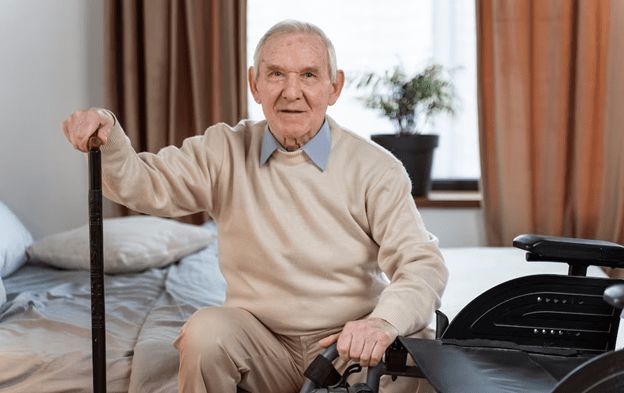
Ultimate Guide to Understanding All Types of Incontinence

Living with incontinence can significantly impact an individual’s daily life, affecting their physical, emotional, and social well-being. It is essential to understand the different types of incontinence to properly manage and seek appropriate treatment. Incontinence is a common condition that should not be a source of shame. Openly discussing it helps raise awareness and provides support to those who may be experiencing it.
Stress Incontinence
Stress incontinence is the most common type of incontinence, particularly among women. It occurs when pressure is exerted on the bladder, leading to urine leakage. This can happen during activities such as coughing, sneezing, laughing, or physical exertion. Weak pelvic floor muscles, usually caused by pregnancy, childbirth, or hormonal changes, play a significant role in stress incontinence.
Fortunately, there are several ways to manage stress incontinence. Pelvic floor exercises, such as Kegels, can help strengthen the muscles that support the bladder and improve control. Lifestyle changes like maintaining a healthy weight, avoiding bladder irritants like caffeine, and quitting smoking can also alleviate symptoms.
Urge Incontinence
Urge incontinence, also known as overactive bladder, is characterized by a sudden and intense urge to urinate, followed by involuntary leakage. It occurs due to an overactive bladder muscle that contracts too frequently, leading to an urgent need to empty the bladder. Various factors can contribute to urge incontinence, including neurological conditions, bladder irritants, and hormonal imbalances.
Urge incontinence can be managed by bladder training, which involves gradually increasing the time between bathroom visits. Medications that relax the bladder muscle or block nerve signals may also be prescribed to help manage symptoms. Practicing relaxation techniques and maintaining a regular bathroom schedule can also help reduce the frequency of urgency and leakage episodes.
Understanding the different types of incontinence is crucial in developing an effective management plan. By identifying the specific type and underlying causes of incontinence, individuals can take appropriate steps to regain control over their bladder function and improve their quality of life. Consulting a healthcare professional is highly recommended for an accurate diagnosis and tailored treatment options that address the unique needs of each individual. Remember, with proper management and support, individuals with incontinence can live active and fulfilling lives.
Overflow Incontinence
Overflow incontinence occurs when the bladder doesn’t empty properly, leading to constant leakage of urine. It is often caused by an obstruction or blockage that prevents the bladder from completely emptying. Weak bladder muscles, nerve damage, or certain medications can also contribute to this type of incontinence. People with overflow incontinence may experience frequent urination, a weak urine stream, or a feeling of incomplete bladder emptying.
Treatment for overflow incontinence aims to address the underlying cause. Catheterization, where a thin tube is inserted into the bladder to empty the urine, may be necessary for individuals with a blockage. Medications that help contract the bladder muscles or relieve the obstruction might also be prescribed.
Functional Incontinence
Functional incontinence occurs when an individual has physical or cognitive impairments that prevent them from reaching the bathroom in time. This type of incontinence is not caused by bladder or urinary system dysfunction, but rather by external factors that make it difficult to access the bathroom. Mobility issues, cognitive impairments, or conditions like dementia can contribute to functional incontinence.
Managing functional incontinence involves addressing the underlying causes and providing support to overcome the barriers that hinder bathroom access. This may include using assistive devices like grab bars or commode chairs, implementing a regular toileting schedule, and ensuring the environment is safe and easily navigable. Caregiver support and assistance are essential in helping individuals with functional incontinence maintain their dignity and independence.
Mixed Incontinence
Mixed incontinence refers to a combination of two or more types of incontinence, such as stress and urge incontinence. It is a common occurrence and often requires a multifaceted approach to treatment. The symptoms experienced by individuals with mixed incontinence can vary, and the treatment plan may involve a combination of strategies used for each type of incontinence present. This can include a combination of pelvic floor exercises, bladder training, medications, and lifestyle modifications.
The specific treatment approach will depend on the severity of the symptoms, underlying causes, and individual needs. Consulting with an experienced healthcare professional who specializes in treating mixed incontinence is essential. They will help create a personalized treatment plan tailored to the individual’s specific challenges and needs.
Understanding the different types of incontinence and their distinct characteristics is crucial for effective management. By identifying the specific type of incontinence and its underlying causes, individuals and healthcare professionals can work together to develop an appropriate treatment plan. The goal is to improve bladder control, reduce symptoms, and enhance overall quality of life. Remember, seeking professional guidance and support is key in managing and overcoming the challenges posed by urinary incontinence.
Types of urinary incontinence products offered by Absorba Nateen

When it pertains to urge incontinence, adult diapers might be of assistance. It is good to be able to rely on a solution that aids as a line of protection when concern over leaks reaches its peak.
To make things simpler for you, shop for adult incontinence necessities with us today. Ranging from adult diapers to underpads and adult wipes, we are the one-stop shop here to address any incontinence concerns.
Choosing the perfect adult diaper can be overwhelming with the wide range of styles, sizes, and fabrics available. If you’re looking for adult diapers that provide the finest leakage protection, go no further than Absorba Nateen. SAP (Super Absorbent Polymer) layers in adult diaper pants keep you dry for up to 10 hours while ensuring optimal cleanliness.
At Absorba Diaper, we are Singapore’s leading distributor of adult diapers with a wide selection of eco-friendly and ultra-soft adult pull-up diapers catered to your every need. We can help you or your loved ones overcome incontinence together and live your life to the fullest!
Contact us for any inquiries regarding our adult diapers.
